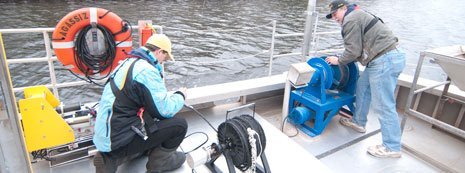Assessment of water treatment residuals as sorbent material in permeable reactive barriers: Application to a copper-contaminated site
©2018 Wiley Periodicals, Inc. Publisher's version of record: https://doi.org/10.1002/rem.21583
Abstract
The objective of this study is to design a pilot‐scale permeable reactive barrier (PRB) for the removal of copper from groundwater in Keweenaw Peninsula, Michigan. The reactive material selected for the barrier is drinking water treatment residuals (WTR)—the residuals of alum coagulants used in a local drinking water treatment plant. Physical and chemical properties of the WTR were determined. Synthetic precipitation leaching procedure tests indicated the concentrations of hazardous elements leached from the residuals do not exceed U.S. Environmental Protection Agency limits and, hence, can be safely recycled as PRB material. Batch reactor tests showed that equilibrium sorption of copper is high and fits a Langmuir‐type isotherm. Site characterization studies included groundwater flow direction, pore water velocity, and contaminant concentration to determine optimal dimensions and placement of the PRB. Permeameter tests were performed with various mixtures of the WTR and an inert support material (pea gravel) to determine the ideal mix to match the hydraulic conductivity of the field site. Kinetic and column experiments were conducted to understand the significance of chemical and physical mass transfer limitations. Based on the results, dimensions of a PRB to meet the Michigan Department of Environmental Quality target level of 0.031 milligrams per liter (mg/L) total Cu were calculated.

